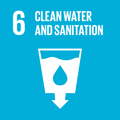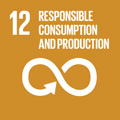- Docente: Alessandra Bendini
- Credits: 4
- SSD: CHIM/10
- Language: Italian
- Teaching Mode: Traditional lectures
- Campus: Bologna
- Corso: Second cycle degree programme (LM) in Chemistry (cod. 9072)
Learning outcomes
At the end of the course, the student knows the meaning, the classification of methods and the basic concepts of food analysis.
He or she has the skills to comphend and deepen the most suitable traditional, instrumental or sensory methods on variuos food; the student also knows the meaning of food quality, safety and authenticity.
Course contents
The course consists of theoretical lessons and practice exercises in chemical-instrumental and sensory laboratories.
Theoretical lessons: Classroom available at Distretto Navile - Aula 1H, primo piano edificio "U.E. 1" via della Beverara, 123/1.
Practice exercises: Laboratory of Sensory Analysis at DISTAL Dipartimento di Scienze e Tecnologie Agro-Alimentari - IV piano, viale Giuseppe Fanin 40, Bologna.
The course is organized as following reported:
INTRODUCTION AND ORGANIZATION OF THE COURSE
FOOD QUALITY and AUTHENTICITY
BEVERAGES ANALYSIS: POTABLE WATER/NATURAL MINERAL WATER
Compositional, quality and safety aspects.
Chemical-instrumental determination of nitrate content.
Elements of psychophysiology of senses: theoretical concepts and practical tests on basic tastes and perceptive thresholds.
BEVERAGES AND SEASONINGS ANALYSIS: VINEGARS (PDO/PGI)
Compositional, quality and safety aspects.
Chemical-instrumental determination of HMF and furanic derivatives.
Elements of psychophysiology of senses: colour, aroma and texture.
ANIMAL FOOD PRODUCTS: MILK AND DERIVATIVES
Compositional, quality and safety aspects.
Chemical-instrumental determination of fatty acid composition.
Sensory consumer tests. Liking scales and JAR scale.
ANIMAL FOOD PRODUCTS: THE HONEY
Compositional, quality and safety aspects.
Chemical-instrumental determination of proline content.
Selection and training of assessors, physiological and psychological errors.
Descriptive sensory tests.
VEGETABLE FOOD PRODUCTS: OLIVE OIL AND VEGETABLE OILS
Compositional, quality and safety aspects.
Chemical-instrumental determination of phenolic fraction.
The Panel test of virgin olive oils: quality grade determination.
Readings/Bibliography
Electronic version (pdf, xls) of lessons and practice exercises is furnished by teacher (Virtual Learning Environment platform)
For consultation/detailed study on Food Analysis topics: Cabras P., Tuberoso C., "Analisi dei Prodotti Alimentari" Ed. Piccin (Padova), 2013.
For consultation/detailed study on Sensory aspects of food products: Pagliarini E., "Valutazione Sensoriale" Ed. Hoepli (Milano), 2021, seconda edizione.
For consultation/detailed study on Analytical Chemistry topics: Harris D. C. "Chimica Analitica Quantitativa", Zanichelli, 2005.
Teaching methods
Theoretical lessons and practical experiences in chemical-instrumental and sensory laboratories.
The certification of health and safety training (module 1 and module 2 in e-learning mode plus module 3) is requested to students participating in praticals in labs.
Assessment methods
Learning examination is based on an oral discussion on the topics of programme.
Teaching tools
Lessons in presence: slide projector and electronic form of slides; practical applications in chemical-instrumental and sensory laboratories.
Office hours
See the website of Alessandra Bendini
SDGs


This teaching activity contributes to the achievement of the Sustainable Development Goals of the UN 2030 Agenda.
